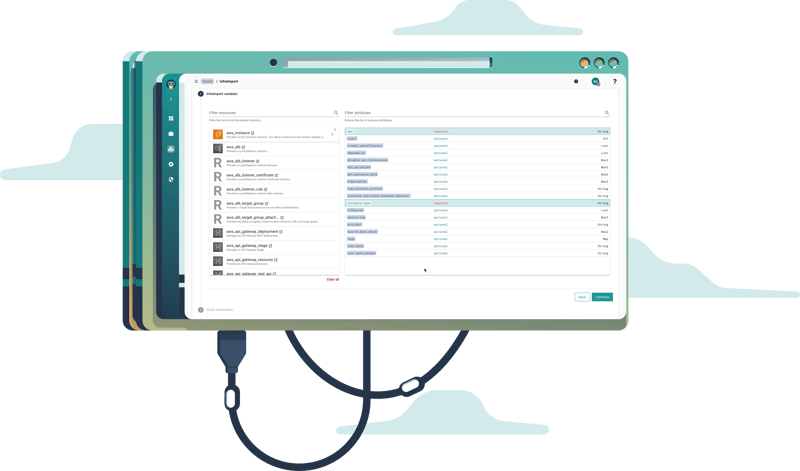TL;DR
Infra Import, launched last week, marks an important milestone in the ability to use Cycloid to create infrastructure as code and industrialize deployments even when using legacy code.
The problem
Infra Import sidesteps the age-old problems that arise when trying to manage your infrastructures through your cloud provider’s console or - perhaps even worse - trying to create your own Terraform from scratch. The console can result in wasted effort, error, and infrastructure drift. It’s hard to scale and when your infrastructures get more complex, it just leads to more complicated problems. If you’re brave enough to create your own Terraform, your devs risk boredom and frustration. That’s if you’re even lucky enough to have a DevOps engineer willing to try - something that many organizations struggle with.
The solution
We’ve launched Infra Import as part of Cycloid. Based on our open-source tool, TerraCognita, it’s an IaC automation and project generator that allows you to manage your manually-deployed cloud infrastructure with Cycloid. It automatically creates StackForms, Pipelines, and your Terraform and .tfstate files.
You can see where we’re going, right? Because Infra Import does this job automatically, the DevOps you do have don’t need to spend their precious time on the job, and, well, if you don’t have many DevOps engineers, you can get the job done anyway. Not everyone wants to become a DevOps engineer and, even if they do, it’s not usually a speedy process. Thanks to Infra Import, however, this won’t be a problem for your organization, no matter where it is along the road to DevOps. You can help non-expert people start with Infrastructure as Code, ensure best practice is respected, and save time for the DevOps you do have.

Your existing deployments are back under your control!
We know you worry about governance, but here, there's no need for concern. Your DevOps/Infra team will always have the last word when it comes to the policies, roles, and permissions that govern your infra. They’ll have the governance they need and end-users will have the autonomy, flexibility, and simplification they want - and everyone ends up happy.
How it works
There are just a few steps between you and infrastructural bliss.
- Select your cloud provider and fill out the appropriate credentials to enable connection to the API. This will allow you to import your deployed infrastructure.
- Select which stack resources you want to import from your deployed infra.
- Name your blueprint and specify what catalog repository Infra Import should use to store the created stack.
- Enter the name of the project you want to launch, the config repository where the project configuration will be stored, and the location of your Terraform state file.
Your next steps
The best way to see Infra Import in action is to ask for a demo or a watch our demo video. Cycloid’s a multi-faceted, end-to-end enterprise tool - it's going to help you roll out a DevOps revolution in your organization. It makes no sense to give you access, a pat on the back, and leave you to your own devices for 30 days, so we ask you to get in touch so we can optimize your experience.
Infra Import helps you scale efficiently, in a reproducible and controlled manner, across all your environments - what’s not to love?! Getting in touch could be the best move you make today.
